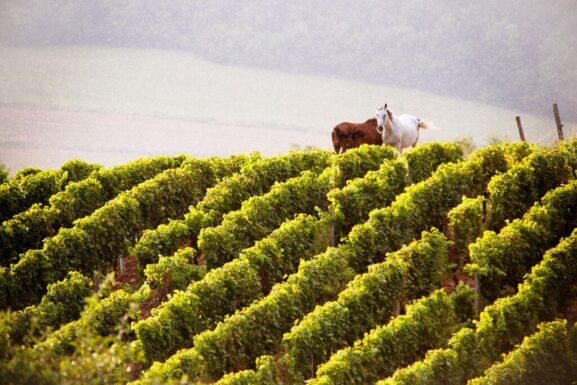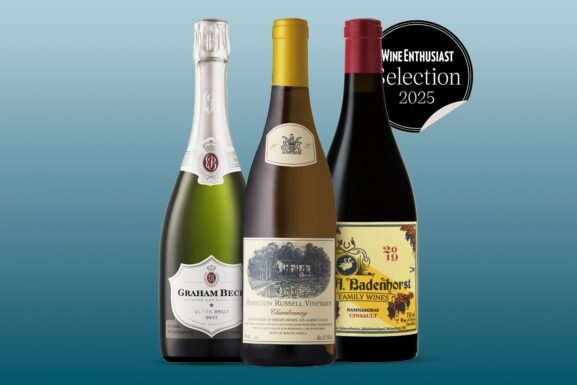Culture: U.S. Cognac Sales Are Plunging—Here’s Why
Some seemed shocked by Rémy Cointreau’s announcement last week that its U.S. sales had plunged in the first half of 2023, with a 43% decline in current operating profit. According to Bloomberg, “the high-end spirits producer has been sideswiped by a steep drop in demand for its expensive liquors in the key U.S. market and a vicious promotional price war with rivals such as [Hennessy Cognac producer] LVMH.”
Frankly, I’m surprised that anyone is surprised. If you’ve paid attention to trends in the American high-end spirits market over the past few years, particularly the brandy category, Rémy Cointreau’s issues are straightforward.
You May Also Like: A Guide to All Things Cognac
For starters, by all indications, 2023 is a down year across the board in the spirits industry, whiplash from the boom of the pandemic years. This has been especially felt at the premium and super-premium levels. According to the Financial Times, many consumers who traded up to more expensive premium booze during the pandemic are now starting to trade down. Americans spent nearly a third more on spirits in 2022 than they did pre-pandemic, but key indicators suggest that 2023 will be a serious correction. Sales of spirits costing more than $100 were down 14% in the 12 months leading up to August.
The Cognac category seems to be hit especially hard. Rémy Cointreau’s rival LVMH already reported last week “that revenue from wine and spirits had fallen 10% so far this year, amid a big drop in U.S. Cognac sales,” according to the FT. So, what explains the particularly steep drop for cognac?
In this month’s print issue, I wrote about what’s happening at the top end Cognac market. For years, cognac has been dominated by big brands like Rémy Martin, Hennessy, Martell and Courvoisier—the so-called Big Four, which sell nearly 90% of the Cognac consumed worldwide. Those brands have used a certain style of blingy luxury to market their traditional blends, with vague age classifications like VSOP, XO, Extra, Réserve, Hors d’Age and Napoleon, which can be confusing to American consumers. At the highest end, much of the price of those brand-name bottles is wrapped up in specially designed decanters. All of this feels out of step with the current generation of premium spirits buyers.
In the U.S., where whiskey has been king, high-end spirits aficionados want singularity, scarcity and hard numbers. This means special single cask offerings or direct-age statements on the label, neither of which are common in Cognac. That’s why there’s a growing trend in brandy of single barrels (which I also wrote about in my print feature) and clearer age numbers on the label.
This trend is a relatively new phenomenon in brandy, but it’s something that’s already been successful for Armagnac. Single-barrel Armagnac from négociants like L’Encantada are catching the fancy of American whiskey connoisseurs tired of paying rising whiskey prices. Some see Armagnac as “the new bourbon.” There’s a reason that spirits entrepreneurs like Alexander Stein (founder of Monkey 47) and Raj Bhakta (formerly of Whistle Pig) have both acquired traditional Armagnac houses. The issue in Armagnac is that the existing stock of old barrels is small and shrinking.
This opens the door for Cognac, which has vast stocks of aged brandies, to follow a similar model with the potential to convert whiskey connoisseurs. It’s already starting to happen. These days in Cognac, there’s much more barrel hunting with an eye toward single-cask releases. Numerous traditional houses, such as Jean Fillioux, Frapin, Pasquet and Remi Landier are now offering single barrel selections, many of which are generating buzz among collectors in the brandy forums. Last year, Sazerac released a Cognac from an estate it purchased. Last month, Tennessee whiskey producer Uncle Nearest announced its acquisition of a Cognac property.
You May Also Like: Barrel Hunting in Cognac: Unearthing Hidden Treasures in Dusty Old Cellars
To be clear, at the moment, single barrel Cognac is still the domain of aficionados, with prices running more than $100 to $200 per bottle. But they’re still a fraction of the price of offerings like Rémy Martin Louis XIII or Hennessy Paradis Imperial (which both run more than $3,000). Much of the price of those blingy brand names is wrapped up, as previously mentioned, in specially designed decanters. The new wave of single-barrel offerings, however, is something rarer and scarcer.
“This is for people who want the unexpected. It’s a different philosophy. It’s outside of the current market,” says Alexandre Vingtier, a respected French spirits critic who edits Rumporter magazine.
Those people used to flock to brands like those of Rémy Cointreau. Given the sales plunge among Cognac’s Big Four, I wonder if we’ll soon be seeing more single barrel offerings from giants like Rémy Martin and Hennessy.
You can follow Jason Wilson on Wine Enthusiast and click here to subscribe to his Everyday Drinking newsletter, where you’ll receive regular dispatches on food, travel and culture through the lens of wine and spirits.
Published: December 6, 2023


